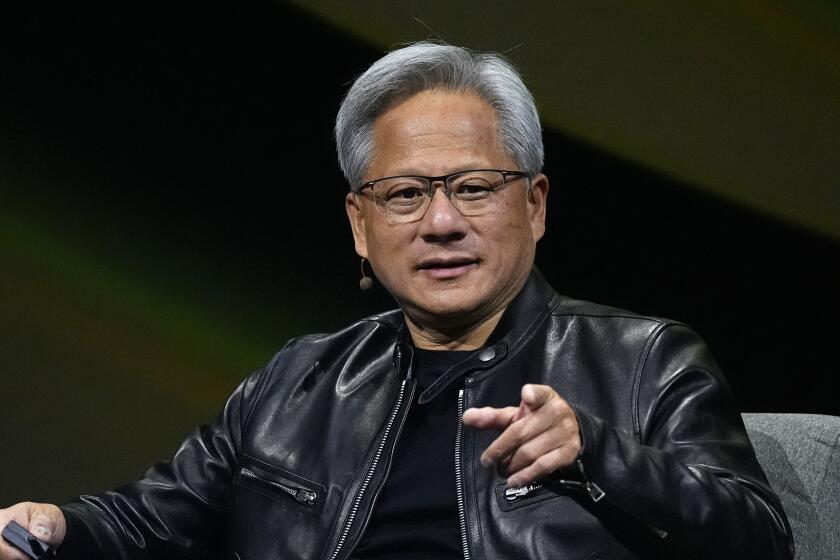Attorneys Scramble to Highlight Damage Ruling
Five hours after the U.S. Supreme Court put curbs on punitive damage awards Monday, Lisa Perrochet had worked the opinion into a motion in one case. By Tuesday, the Encino lawyer had turned up a handful of others where she believes it will help.
The 6-3 decision slashing a $145-million punitive damage award in State Farm Mutual Automobile Insurance Co. vs. Campbell reins in the ability of jurors to punish wayward businesses with financial penalties. Corporate advocates hailed the ruling. Consumer advocates cursed it.
And lawyers for companies got busy drafting motions aimed at drawing judges’ attention to the opinion.
“By noon yesterday, we had identified at least a half-dozen cases in our offices where this is directly relevant, and that’s just off the cuff,” said Perrochet, of Horvitz & Levy.
Big punitive damage awards capture a great deal of attention, but they are imposed in a small fraction of cases and rarely upheld on appeal.
A recent Justice Department study found the median punitive damage award was $38,000, said Robert Peck, president of the Assn. of Trial Lawyers of America’s Center for Constitutional Litigation.
“In the body of tort litigation, this is a toenail,” Peck said. “Punitive damages are so extraordinarily rare. Most plaintiffs’ lawyers have not brought an action involving punitive damages.”
But the ceiling for punitive damage awards appears to be getting higher.
Juries nationwide have imposed more than 50 punitive damage awards of more than $100 million and have recently stung companies with several multibillion-dollar awards, according to research by Harvard law school’s W. Kip Viscusi and Joni Hersch.
“It used to be that $1-million punitive damage awards got people’s attention,” Viscusi said. The bigger awards “may mean that juries are thinking of a new high anchor for punitive damages.”
The trend that has sent shock waves through corporate America.
Punitive damages are “like bolts of lightning striking, and when they strike they are devastating,” said Theodore J. Boutrous Jr., a partner at Los Angeles’ Gibson, Dunn & Crutcher.
About a dozen cases challenging punitive damage awards as excessive are pending at the Supreme Court, said Boutrous, whose firm is tracking them.
Now that the Campbell case has been decided, plaintiffs’ lawyers are expected to put more emphasis in lawsuits and at trial on pain and suffering -- injuries that jurors can address with compensatory damages and that were not at issue in the Supreme Court ruling.
At trial, corporate defense lawyers are expected to argue that jurors should be instructed to follow the high court’s advice, and ignore a firm’s bad behavior in other states when calculating punitive damages.
In cases on appeal, corporate lawyers probably will highlight the court’s finding that punitive damages of more than nine times compensatory awards may be unconstitutionally excessive and that a 1-1 ratio is often appropriate.
The decision also could give corporate lawyers more leverage in settlement negotiations.
“This cuts down the threatening effect of punitive damages,” said Victor Schwartz, a Washington attorney and author of a torts textbook. “That makes it easier for a defendant to refuse to settle an individual case.”
Consumer advocates said the ruling robs jurors of an infrequently used power to punish outrageous conduct in a meaningful way.
“Punitives are very important in terms of their deterrent effect,” said Sally Greenberg, a senior product safety lawyer for the Consumers Union. “At the same time, they are far more rare events than the public has been led to believe.”
Claremont plaintiffs’ attorney William Shernoff said he feared the decision “is going to give somewhat of a green light to insurance companies and other companies to engage in misconduct and not have to worry too much about blockbuster punishment. It will have a chilling effect on reining in corporate misconduct.”
But Cornell law professor Theodore Eisenberg cautioned against predicting an outbreak of corporate malfeasance.
“I don’t think companies will go around committing a lot more torts because of this,” he said.
The possibility of a punitive damage award almost 10 times as large as a compensatory award “is not trivial if you have a big compensatory award.”
Eisenberg said he didn’t expect the ruling to dissuade plaintiffs’ lawyers from filing as often as they do now.
“They don’t bring cases in expectation of punitive damages; they bring them for compensatory damages,” he said. But, “they like [the possibility of] punitive damages because it scares the defendants.”
New York University law professor Stephen Gillers said the decision was more important “doctrinally” than practically.
“I think it is significant that the Supreme Court was comfortable in getting into the minutiae of tort law, which traditionally has been a state law matter,” he said.
“That is remarkable, especially for a court that says it is solicitous of state court power.”
Gillers did say he thought some corporations might be more willing to go to trial rather than settle. “This decision removes one arrow from the [plaintiffs] quiver and makes it a little less risky for a prospective defendant to cross the line.”
*
(BEGIN TEXT OF INFOBOX)
Large awards
Tobacco companies top the list of initial punitive damage awards.
*--* Award Defendant Plaintiff Year (billions) Tobacco companies Florida smokers 2000 $144.8 Philip Morris California smoker 2002 28.0 Exxon Mobil Oil spill victims 1994 5.0 from Exxon Valdez General Motors Accident victims 1999 4.8 (gas tank explosion) Radovan Karadzic War crime victims 2000 3.9 Exxon Mobil Alabama 2000 3.4 (defrauded on royalties) CSX, others Rail explosion victims 1997 3.4 American Continental, Investors who bought 1992 3.0 Charles Keating Jr junk bonds Texaco Pennzoil 1985 3.0 (merger dispute) Philip Morris California smoker 2001 3.0
*--*
Note: Some awards were reduced later by the courts.
*
Source: Bloomberg News
More to Read
Inside the business of entertainment
The Wide Shot brings you news, analysis and insights on everything from streaming wars to production — and what it all means for the future.
You may occasionally receive promotional content from the Los Angeles Times.










